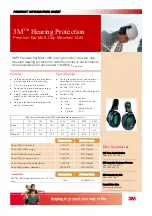
a few seconds. The other current component, comprising the released
absorption current, decays from a lower value with a relatively long time
constant of up to several minutes. If this component of the discharge
current is large (>7 @ 500 V test voltage) then the insulation condition is
poor.
The main timer will default to 30 minutes, which is normally sufficient
time for full absorption to take place in an insulation material. The
default test voltage is set to 500 V. The ‘DD’ test requires the instrument
to measure the discharge current 1 minute after the removal of the
test voltage. At this time the capacitive current should be insignificant
compared with the released absorption current. On completion of the
test, the instrument uses this measurement along with the test voltage
and calculated capacitance to produce a figure of merit indicating the
quality of the insulation.
Dielectric Discharge (DD) = I
1 min
V x C
where I is the measured current expressed in milliamps (mA), V is the
test voltage in Volts (V), and C is the measured capacitance in Farads
(F).
18
Measurements above 100 G
Ω
Measurements up to 100 G
Ω
can be made without any special
precautions, assuming that the test leads are reasonably clean and dry.
The guard lead can be used to remove the effects of surface leakage
if necessary. When measuring resistances above 100 G
Ω
, the test leads
should not be allowed to touch each other, or any other object since this
will introduce leakage paths. Sharp points at the test lead connections
should also be avoided since this will encourage corona discharge.
The output is isolated, and so will float relative to ground such that
the positive terminal is at plus half of the test voltage, and the negative
terminal is at minus half of the test voltage with respect to ground.
Leakages therefore occur between the positive terminal and ground,
between the negative terminal and ground, and directly between the
positive and negative terminals. These leakages have a significant effect
and can occur through the air itself.
If the guard lead is connected to ground, then since the negative
terminal is at the same voltage as the guard terminal, the leakage into
the negative terminal will be considerably reduced. This will improve
accuracy because the current flowing into the negative terminal is
measured by the instrument and used to calculate resistance. This
technique is only permissible if the item under test is isolated from
ground. “Isolated” in this context means insulated by a resistance of at
+ Test V
2
- Test V
2
Ground
+
-







































